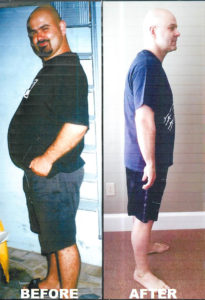
Understanding Healing Crisis
You may feel worse before you feel better.
 In the process of bringing your body back to good health you may experience some temporary pain or discomfort. Symptoms of cold, flu, dizziness, nausea and fatigue may occur.
In the process of bringing your body back to good health you may experience some temporary pain or discomfort. Symptoms of cold, flu, dizziness, nausea and fatigue may occur.
Do not be alarmed. These symptoms do not mean your treatments are not working, but quite the contrary. The discomfort is often a very positive sign that the healing process is taking place.
A healing crisis is any of a wide range of symptoms which may occur during the course of healing. Typically, the onset of these symptoms is very rapid. You may experience some symptoms immediately after a treatment, or up to 2 to 3 days later. The worst of the symptoms may last as little as a few hours or as long as several days. The longer the symptoms last, the stronger the healing crisis. But it is also characterized that when the symptoms have passed, you will feel better than prior to the crisis.
Most patients do not understand the healing crisis because of their experience with conventional medicine. As where the focus of conventional medicine is on eliminating discomfort and curing disease, holistic medicine seeks to address the underlying cause of pain and illness. It aims to balance the body’s energy flow so that the body can restore itself to a healthy state.
Disease is a long, gradual process that occurs over time with stages of progressively ill health preceding it. It moves from less serious physical complaints to more serious ones, and then moves inward to deeper levels. Sometimes minor ailments are driven deeper into the body and become more serious with drug therapy, which suppresses the symptoms, but weakens the immune system. For example, you may first experience a skin problem, which seems to clear up. Later, the disease may progress inwardly to become asthma. Some time after that, you may even develop depression.
 Increasing a person’s health reverses the disease process, almost like putting a video of your disease on rewind. You must move through previous states of health and that is when old symptoms crop up, occurring in reverse order of their original appearance. The person with the skin problem may re-experience some depression, followed by some asthmatic episodes, and later on, the skin problem may re-occur.
Increasing a person’s health reverses the disease process, almost like putting a video of your disease on rewind. You must move through previous states of health and that is when old symptoms crop up, occurring in reverse order of their original appearance. The person with the skin problem may re-experience some depression, followed by some asthmatic episodes, and later on, the skin problem may re-occur.
The aching body, headaches, nausea and fatigue often felt during a healing crisis are primarily the effects of detoxification. In the healing process, the body is working to eliminate its storage of toxins; materials that have been collected in the colon, the tissues and in individual cells. In a sense, the body becomes more toxic temporarily until the toxins are excreted.
Once you understand that some discomfort is normal, and that symptoms can be a positive sign that healing is taking place, there are a number of things you can do to help your body during a healing crisis. First, try to follow your prescribed program correctly. Taking medications, such as antihistamines, aspirin or other painkillers, delay the healing process and may actually prolong the discomfort.
Sufficient rest is very important since your body is under a great deal of stress during the healing process. Similarly, your diet should consist of light, easy-to-digest meals and heavy, hard-to-digest foods should be avoided. Plenty of hot water should be taken throughout the day.
Exercise is often helpful especially if the crisis presents itself on an emotional level. Because many toxins leave the body through the skin, light brushing of the skin with a natural bristle brush can help stimulate blood and lymph flow. Soaking in a warm bath with Epsom salts or Sea Complex Bath TM salts may also be helpful.
Reducing environmental stresses can help a healing crisis pass more quickly. Take a good look at your daily stress level. Your diet, smoking habits, alcohol intake and other lifestyle elements may need to be changed.
Attitude can be one of the most beneficial factors in coping with healing crisis. A positive attitude will allow you to relax and to recognize that the symptoms are temporary and your treatment is on target.
Keep the lines of communication open with your doctor. Report your symptoms and allow the Health Care Practitioner to help you if your symptoms become intolerable. Adjustments in the degree or frequency of treatments may be possible to lessen your discomfort.
The road to good health is an exciting and rewarding journey, but like any worthwhile endeavor, it has some challenges. The healing crisis is an opportunity for you to understand the process your body is going through to reach a state of health. Despite symptoms, you should experience more areas of improvement than discomfort. These brief episodes of symptoms should be considered signs of progress and an indication that you’re on the road to good health.
